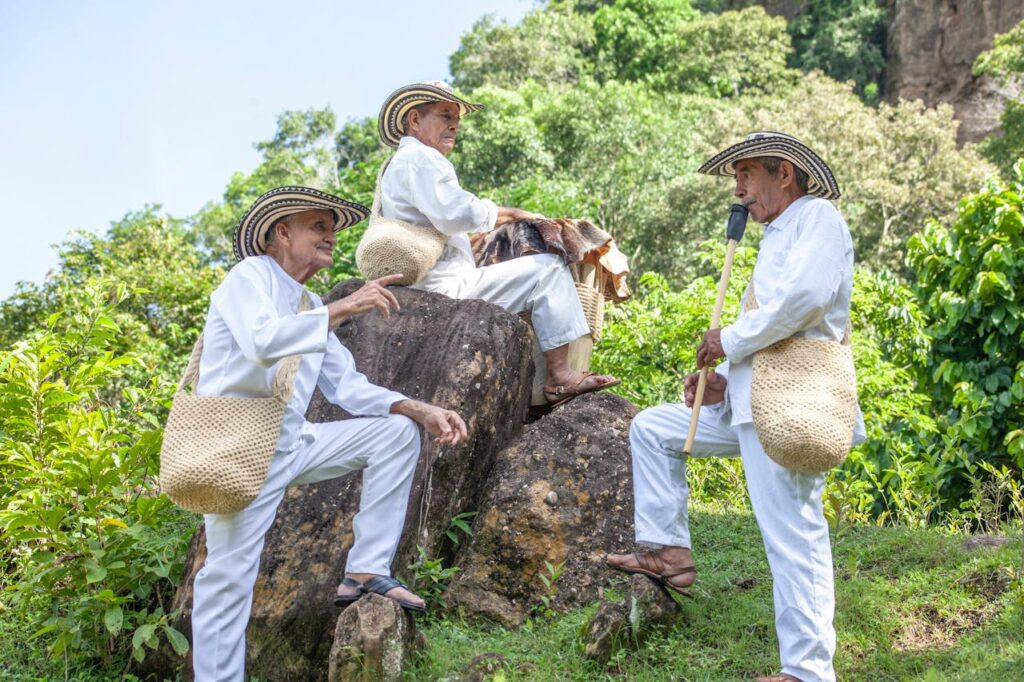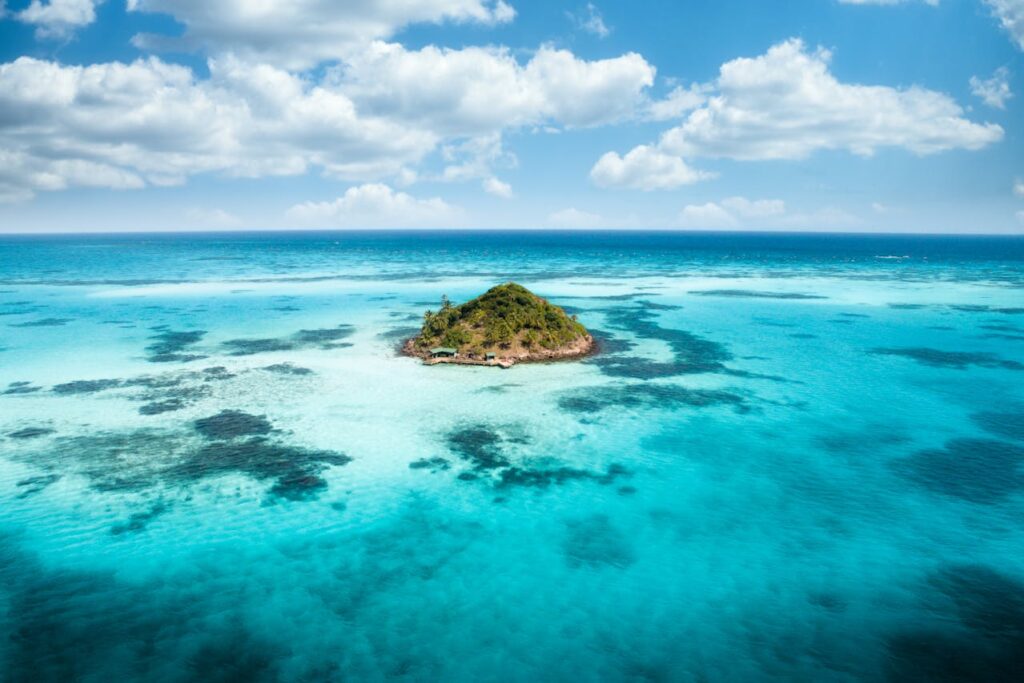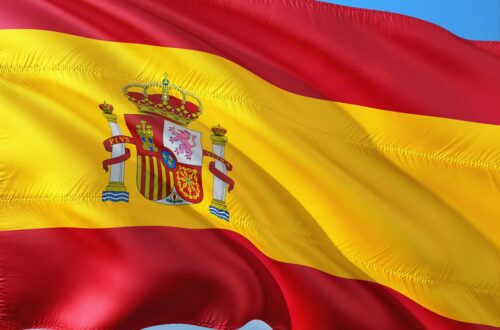
50 Fascinating Facts About Colombian Culture (All You Need)
50 Fascinating Facts About Colombian Culture That Will Surprise You
Firstly, this article presents 50 compelling facts about Colombian culture that reflect the nation’s rich cultural heritage and reveal what makes Colombia a standout gem in Latin America.
Widely celebrated for its vibrant traditions and breathtaking landscapes, Colombia is a treasure trove of cultural richness.
In fact, known as the second most biodiverse country in the world, this South American nation boasts a unique blend of indigenous peoples, African slaves, Spanish conquistadors, and modern global influences.
Through the lens of facts about Colombian culture, a deeper appreciation can be gained for the resilience, beauty, and soul of this fascinating country.
Indeed, it is not just the Caribbean beaches or snow-capped mountains that make Colombia stand out.
Its customs, Colombian cuisine, national holidays, and artistic expressions offer insights into a nation shaped by its geography and history. Now let’s learn all the facts about Colombian culture. So let’s jump straight into these facts about Colombian culture.
A Nation Defined by Its Diversity
Colombia: A Cultural and Geographical Mosaic
As the only country in South America with coastlines on both the Pacific Ocean and the Caribbean Sea, Colombia occupies a special place in the continent’s geography. Consequently, its culture reflects this physical diversity.
- Colombia is home to over 87 recognized ethnic groups, each contributing distinct traditions, music, and languages.
- The official language is Spanish, but more than 65 indigenous languages are still spoken by various indigenous communities.
- The country is divided into five cultural regions: the Andean, Caribbean, Pacific, Orinoquía, and Amazonian zones.
Transitioning Through History: From New Granada to the Republic
Historically, Colombia was part of a Spanish colony known as New Granada. After achieving independence, the nation evolved into the Republic of Colombia. This shift not only redefined its political structure but also catalyzed the formation of a unique national identity.
Interesting Facts About Colombian Culture and Heritage

A Melting Pot of Peoples and Traditions
Interestingly, Colombian culture is an intersection of various civilizations. It has been shaped by the first people who inhabited the region, the native people of the highlands and forests, the African people brought through the slave trade, and the Spanish language brought by colonial rule.
- Traditional Colombian music often blends African rhythms, indigenous instruments, and Spanish guitar.
- Colombian holidays often reflect both Catholic traditions and pre-Columbian rituals.
Art, Literature, and the Soul of a Nation
Therefore, it comes as no surprise that Colombian art and literature have gained international acclaim.
- Nobel Laureate Gabriel García Márquez, famous for magical realism, is one of the most famous Colombians.
- Vibrant street vendors often sell hand-painted crafts that depict daily life in Colombian cities and rural areas.
Colombian Cuisine: A True Taste of Culture
What Is Colombia’s National Dish?
Perhaps the first thing anyone will notice about Colombian culture is its food. Known for its rich flavors and regional specialties, Colombian cuisine reflects the diversity of its natural resources.
- Bandeja Paisa, considered Colombia’s national dish, consists of ground beef, fried egg, plantain, rice, beans, and arepa.
- In the Andes Mountains, it’s common to drink hot chocolate with cheese.
- Tropical fruits like guanábana, lulo, and maracuyá are widely enjoyed across the country.
More than just sustenance, these meals reflect heritage, family ties, and the heart of the Colombian people.
Nature and National Identity

Colombia: A Paradise for Nature Lovers
Because of its position near the equator and varied elevation, Colombia is considered one of the megadiverse countries on Earth. With its lush rainforests, snow-capped mountains, and tropical coastlines, the country draws nature lovers from around the globe.
- Colombia is the 2nd most biodiverse country in terms of animal species, right after Brazil.
- It hosts more bird species than any other country in the world—over 1,900 recorded varieties.
- The Cocora Valley is home to the wax palm, the national flower of Colombia and the tallest palm species on Earth.
- Pink amazon river dolphins, a rare and unique sight, can be spotted in the Amazon region.
Moreover, the natural landscape plays a central role in shaping Colombian culture, affecting local myths, traditions, and even food availability.
Caño Cristales: The River of Five Colors
Frequently referred to as the most beautiful river in the world, Caño Cristales is located in the Sierra de la Macarena. Known for its vivid red, yellow, green, blue, and black hues, it is a true geographical wonder.
According to National Geographic, the river’s colorful appearance is caused by an aquatic plant called Macarenia clavigera, which thrives in the riverbed. This is yet another example of how Colombia’s geography influences its vibrant and distinctive culture (source).
Geography and Its Influence on Daily Life
High Plateaus and Mountain Ranges
Due to its location in the Andes Mountains, Colombia is home to some of the highest capital cities in the world. Bogotá, the capital city of Colombia, sits at an elevation of 2,640 meters (8,660 feet) above sea level.
- These high altitudes influence not only the climate but also architecture, agriculture, and even social customs.
- Traditional housing in mountainous regions is designed to retain heat and withstand rainy conditions during the rainy season.
As a result, daily life is deeply intertwined with nature. Many rural Colombians continue to live sustainably, growing crops like coffee, corn, and potatoes that thrive in this environment.
A Related Article That You Will Enjoy: Interesting Facts About Mexican Culture (Read The Best 88)
Sports and Recreation in Colombian Society
The National Sport and Most Popular Activities
Although soccer (or football, as it is known locally) is the most popular sport, the national sport of Colombia is tejo. Played with gunpowder-filled targets, tejo reflects both indigenous origins and the country’s love for festive gatherings.
- Team sport culture is strong in both major cities and rural areas, often serving as a communal activity.
- Colombian children are introduced to sports early, promoting physical activity and unity in the younger generation.
Therefore, sports are not just recreational—they are woven into the fabric of Colombian culture, fostering national pride and international recognition.
Education, Media, and Cultural Expression

Public Television and the Rise of Colombian Media
In recent years, public television has gained popularity, highlighting Colombian holidays, cultural events, and local talent. Channels often broadcast documentaries on Colombian society, historical dramas, and reality shows featuring famous Colombians.
- Efforts by the Colombian government to promote education through media have led to increased awareness of indigenous communities and traditions.
- Spanish-language programming has also gained popularity outside of Colombia, particularly in the United States and North America.
Music, Dance, and Celebrations in Colombian Culture
Rhythms That Move a Nation
Undoubtedly, music and dance are essential to understanding facts about Colombian culture. The nation’s diverse heritage is reflected in the lively sounds of vallenato, cumbia, salsa, and champeta, each representing a fusion of indigenous, African, and Spanish roots.
- Cumbia, often considered Colombia’s most traditional music genre, originated along the Caribbean coast.
- Vallenato, born in the northern regions, is played with the accordion, caja, and guacharaca.
- Salsa is popular in major cities, especially Cali, often called the salsa capital of the world.
Therefore, music acts not just as entertainment but as a form of storytelling. Through its rhythms and lyrics, the collective joys, struggles, and histories of the Colombian people are preserved.
National Holidays: A Calendar Full of Color
With over 18 official Colombian holidays, the nation is known for its celebratory spirit. These festivities often combine religious rituals with cultural expressions, forming a colorful patchwork of traditions.
- Carnaval de Barranquilla is one of the largest carnivals in the world and showcases the diverse folklore of Colombian culture.
- Semana Santa (Holy Week) involves solemn processions and dramatic reenactments in cities like Popayán.
- Independence Day on July 20th is marked by parades, music, and public ceremonies.
As a result, national holidays become important markers of collective identity and unity across all ethnic and social groups.

Historical Influences and Notable Figures
From Spanish Conquest to Modern Republic
The arrival of Spanish conquistadors in the 1500s dramatically altered the social, political, and cultural landscapes of what is now Colombia. The fusion of indigenous peoples, enslaved African people, and Spanish settlers laid the groundwork for a deeply blended society.
- The region was originally named after Christopher Columbus, though he never actually set foot there.
- Several civil wars and revolutions shaped the emergence of the Republic of Colombia in the 19th century.
Moreover, remnants of this colonial past can still be seen in the architecture of Colombian cities, the persistence of the Spanish language, and social structures.
Pablo Escobar: A Complicated Legacy
In discussing modern facts about Colombian culture, the influence of Pablo Escobar cannot be ignored. While his legacy is rooted in violence and crime, the social and economic impacts of his cartel era continue to influence public policy, media narratives, and international perceptions.
- His rise and fall highlight complex relationships between the Colombian government, marginalized populations, and international powers like the United States.
- In recent years, the country has made significant progress in reducing crime and redefining its global image.
Although Escobar’s story is a dark chapter, it forms part of a larger narrative of resilience and transformation within Colombian society.
A Related Article That You Will Enjoy: Interesting Facts About Puerto Rico (The Best 44)
Language, Identity, and Modern Challenges

The Richness of Colombian Spanish
Colombia is often praised for having one of the clearest forms of the Spanish language in Latin America. Its linguistic nuances vary widely by region, with the Caribbean coast, Pacific coast, and high plateau all displaying unique dialects.
- Coastal accents tend to be faster and more melodic.
- Highland Spanish is often slower and more formal, influenced by indigenous speech patterns.
Additionally, the survival of indigenous languages is promoted by cultural organizations and educational institutions, ensuring that ancestral tongues are preserved and respected.
Ancient Civilizations and Sacred Sites
Ciudad Perdida: The Lost City of the Sierra Nevada
Among the most remarkable facts about Colombian culture is the presence of Ciudad Perdida—the Lost City, hidden deep in the Sierra Nevada de Santa Marta mountains. Built by the indigenous peoples of the Tairona civilization around 800 CE, this sacred site predates Machu Picchu by several centuries.
- Discovered in the 1970s, it can only be reached by a multi-day hike through lush rainforests and across rivers.
- The site features stone terraces, ceremonial plazas, and a deep spiritual connection to the native people who still live nearby.
Thus, this ancient city serves as a vivid reminder of the intellectual and architectural achievements of Colombia’s first people—long before the arrival of the Spanish conquistadors.
Preserving Indigenous Heritage
Because Colombia is home to 115 indigenous communities, the preservation of sacred sites like Ciudad Perdida is essential. These communities maintain a close connection to the land, with spiritual beliefs often tied to the mountains, rivers, and forests.
- Traditional medicine, ritual ceremonies, and oral storytelling are actively practiced.
- Some communities, such as the Kogi, Arhuaco, and Wiwa, are still governed by councils of spiritual elders known as mamos.
As a result, these ancestral traditions remain an integral part of Colombian culture, even as the country modernizes.
Colombian Innovation and Urban Life

Medellín: From Notoriety to Innovation
Frequently cited in conversations about transformation, Medellín, once notorious for crime, has rebranded itself as the most innovative city in Latin America.
- The city features cable cars connecting rural areas with major cities, reducing economic inequality.
- Urban planning projects, like the public library system and green corridors, promote education and sustainability.
Consequently, Medellín has become a symbol of hope, reflecting the country’s broader efforts to evolve and improve life for future generations.
The Pulse of Colombian Cities
Because urban life is thriving in places like Bogotá, Cali, and Cartagena, these Colombian cities each offer a unique expression of Colombian culture.
- Bogotá, the capital city of Colombia, is known for its street art, museums, and colonial architecture.
- Cartagena is famous for its preserved walled city and vibrant nightlife along the Caribbean coast.
- Cali is a hotspot for dance and music, particularly salsa.
Therefore, each city adds its own flavor to the cultural mosaic, from art and food to fashion and nightlife.
Colombian Cuisine: Regional Delights and National Identity
Beyond Bandeja Paisa
Although bandeja paisa is the iconic dish, each region contributes uniquely to the country’s culinary richness.
- The Amazon region features exotic ingredients like fish wrapped in banana leaves and tropical fruits.
- On the Pacific coast, seafood is a staple, often served with coconut rice and fried plantains.
- In the Andes, soups like ajiaco (chicken and potato soup) are enjoyed, especially in colder climates.
Additionally, Colombian food is influenced by local climates and cultural histories. Meals are seen as a time for bonding, not merely eating, reflecting the warm and social nature of the Colombian people.
Natural Wonders and Biodiversity

Colombia: The 2nd Most Biodiverse Country on Earth
Unquestionably, one of the most remarkable facts about Colombian culture is how closely tied it is to nature. Recognized as the 2nd most biodiverse country on the planet, Colombia boasts an extraordinary range of species of orchids, mammals, amphibians, and insects.
- Over 4,000 orchid species thrive here, making Colombia the global leader in orchid diversity.
- The amazon rainforest and mountain ranges such as the Andes create microclimates that support diverse life.
- Colombia is also known for the highest amount of species per square kilometer globally.
Because of this, the natural world heavily influences folklore, religion, and art—especially in indigenous communities, where animals and plants often hold sacred significance.
National Parks and Protected Areas
To preserve these ecosystems, over 50 national parks have been established, covering everything from coral reefs to high plateau tundras.
- Tayrona National Park, near the Caribbean Sea, is a hotspot for eco-tourism and indigenous heritage.
- Los Nevados is home to glacial peaks and thermal springs.
- The Amazon’s Amacayacu National Park shelters countless animal species and indigenous languages.
For nature lovers, these parks are among the best places to experience the wild side of Colombian culture firsthand.
A Related Article That You Will Enjoy: Iconic Facts About South America (The Best 61 Disclosed)
Facts About Colombian Culture: Frequently Asked Questions (FAQ)

What is the most interesting fact about Colombian culture?
Perhaps the most interesting fact is that Colombia is the only South American country with coastlines on both the Pacific Ocean and the Caribbean Sea, which has helped shape a highly diverse cultural and ecological identity.
What is bandeja paisa, and why is it important?
Bandeja paisa is Colombia’s national dish, symbolizing the blend of rural tradition and regional pride, especially from the Antioquia region. It’s a large, hearty meal that tells a story of working-class roots and local ingredients.
How has Colombian culture been influenced by other civilizations?
Colombian culture reflects a fusion of indigenous peoples, African slaves, and Spanish conquistadors, with modern influences from North America and Europe shaping current trends.
What is the role of music in Colombian society?
Music is a central form of expression, tied to national identity and community events. Traditional genres like vallenato and cumbia are accompanied by dance and often performed during Colombian holidays.
Are there still indigenous cultures living in Colombia?
Yes, over 100 indigenous communities live across the country, many preserving ancient languages, ceremonies, and governance systems.
Facts About Colombian Culture Conclusion: A Tapestry of Heritage, Nature, and Innovation
Ultimately, these facts about Colombian culture reveal a nation that is as complex as it is beautiful. With its deep historical roots, dynamic urban centers, breathtaking biodiversity, and rich artistic legacy, Colombia stands as a beacon of resilience, diversity, and hope in Latin America.
Although often overshadowed by past challenges, the Colombian people continue to redefine their national identity—one that embraces the wisdom of the past while innovating toward a brighter, more inclusive future.
Whether you’re drawn by the sounds of salsa, the flavors of Colombian food, or the trails of the Lost City, the heart of Colombia beats in every cultural detail—making it one of the most enriching places on Earth to explore.
We hope that you have enjoyed reading these 50 facts about Colombian culture and that you please share the article with friends and on Social Media, Thank you.




